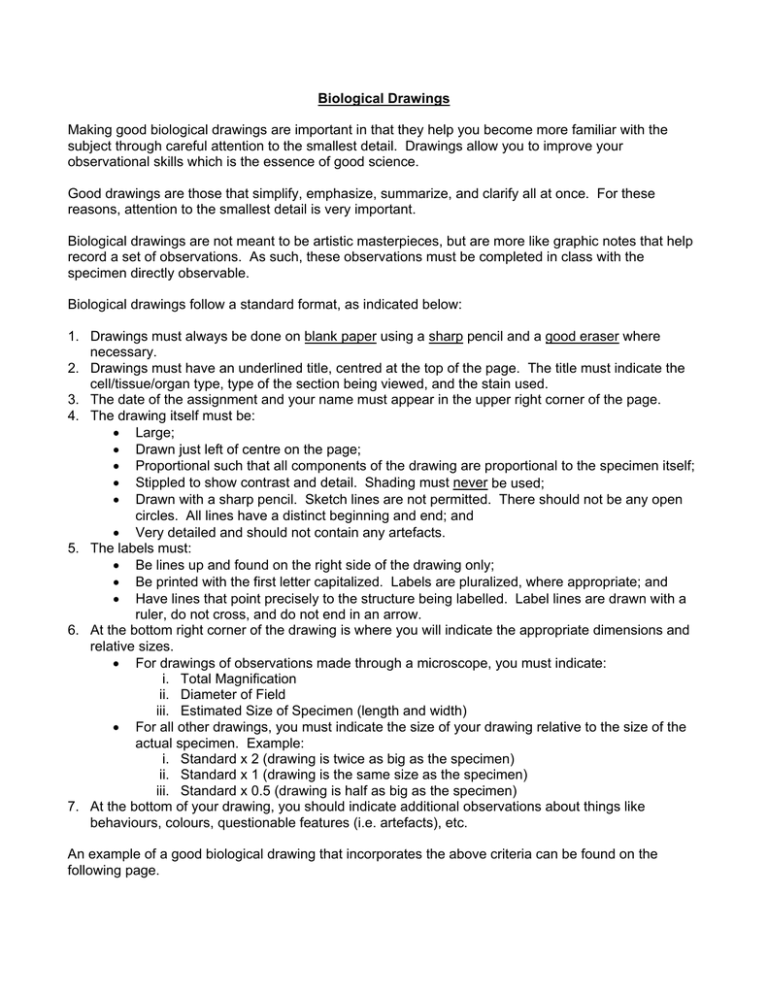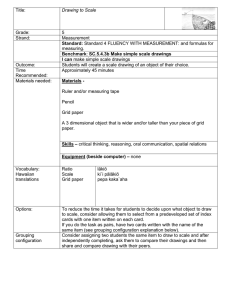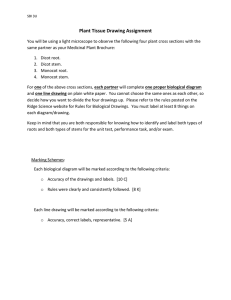Biological Drawings
advertisement

Biological Drawings Making good biological drawings are important in that they help you become more familiar with the subject through careful attention to the smallest detail. Drawings allow you to improve your observational skills which is the essence of good science. Good drawings are those that simplify, emphasize, summarize, and clarify all at once. For these reasons, attention to the smallest detail is very important. Biological drawings are not meant to be artistic masterpieces, but are more like graphic notes that help record a set of observations. As such, these observations must be completed in class with the specimen directly observable. Biological drawings follow a standard format, as indicated below: 1. Drawings must always be done on blank paper using a sharp pencil and a good eraser where necessary. 2. Drawings must have an underlined title, centred at the top of the page. The title must indicate the cell/tissue/organ type, type of the section being viewed, and the stain used. 3. The date of the assignment and your name must appear in the upper right corner of the page. 4. The drawing itself must be: Large; Drawn just left of centre on the page; Proportional such that all components of the drawing are proportional to the specimen itself; Stippled to show contrast and detail. Shading must never be used; Drawn with a sharp pencil. Sketch lines are not permitted. There should not be any open circles. All lines have a distinct beginning and end; and Very detailed and should not contain any artefacts. 5. The labels must: Be lines up and found on the right side of the drawing only; Be printed with the first letter capitalized. Labels are pluralized, where appropriate; and Have lines that point precisely to the structure being labelled. Label lines are drawn with a ruler, do not cross, and do not end in an arrow. 6. At the bottom right corner of the drawing is where you will indicate the appropriate dimensions and relative sizes. For drawings of observations made through a microscope, you must indicate: i. Total Magnification ii. Diameter of Field iii. Estimated Size of Specimen (length and width) For all other drawings, you must indicate the size of your drawing relative to the size of the actual specimen. Example: i. Standard x 2 (drawing is twice as big as the specimen) ii. Standard x 1 (drawing is the same size as the specimen) iii. Standard x 0.5 (drawing is half as big as the specimen) 7. At the bottom of your drawing, you should indicate additional observations about things like behaviours, colours, questionable features (i.e. artefacts), etc. An example of a good biological drawing that incorporates the above criteria can be found on the following page.




